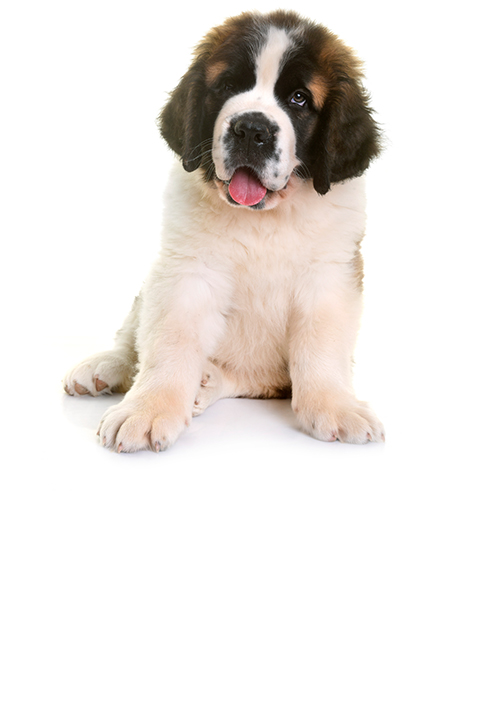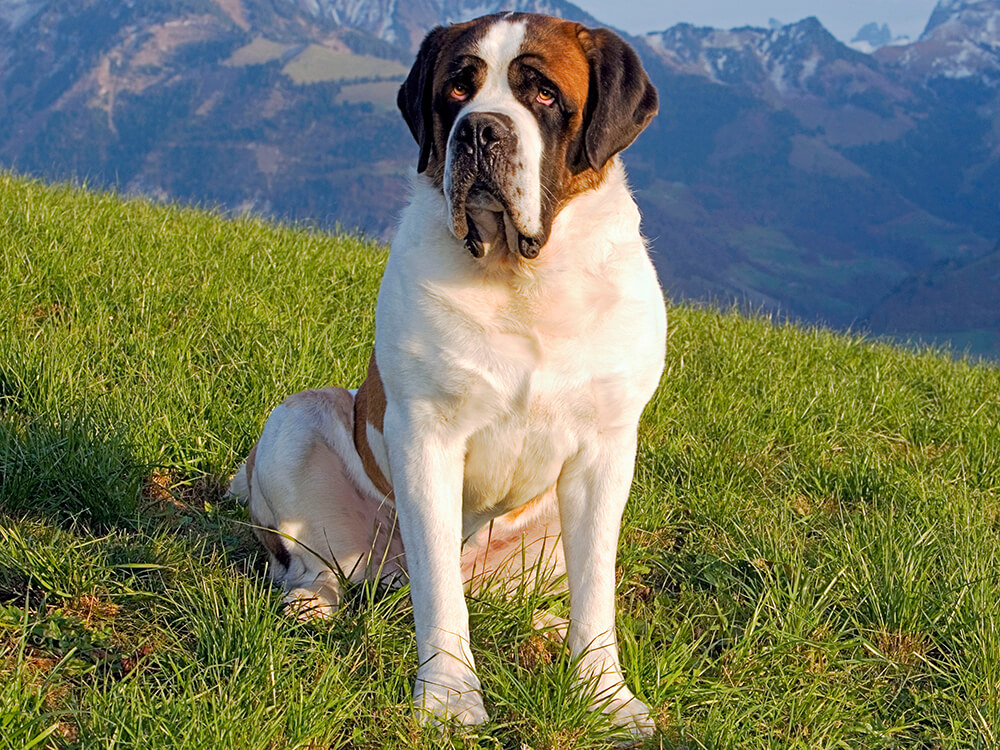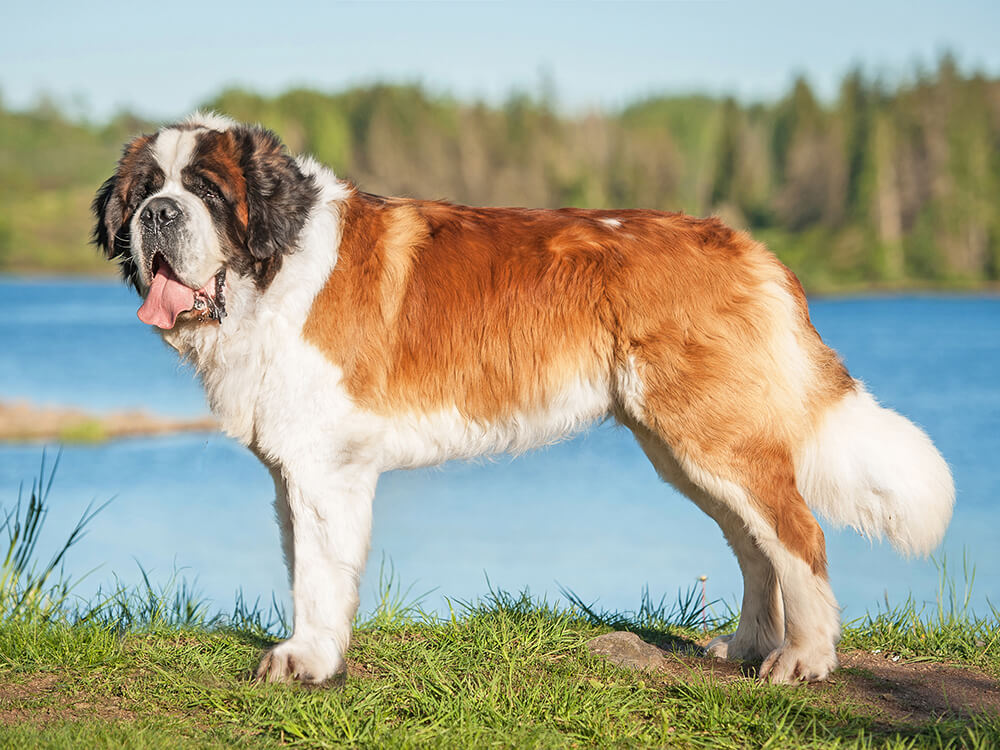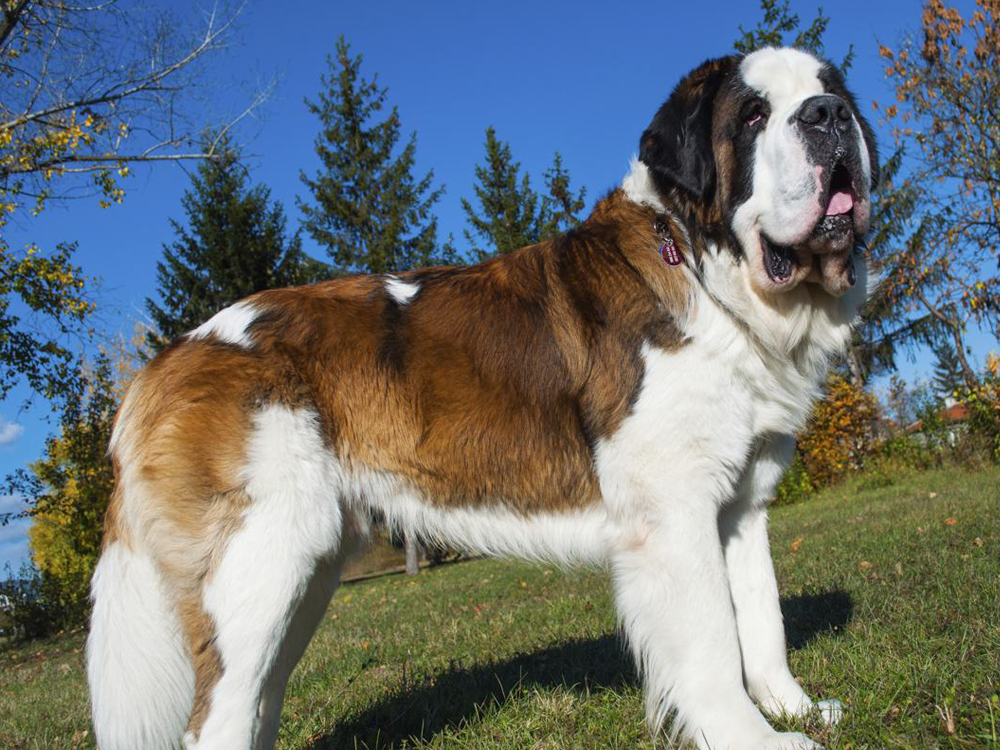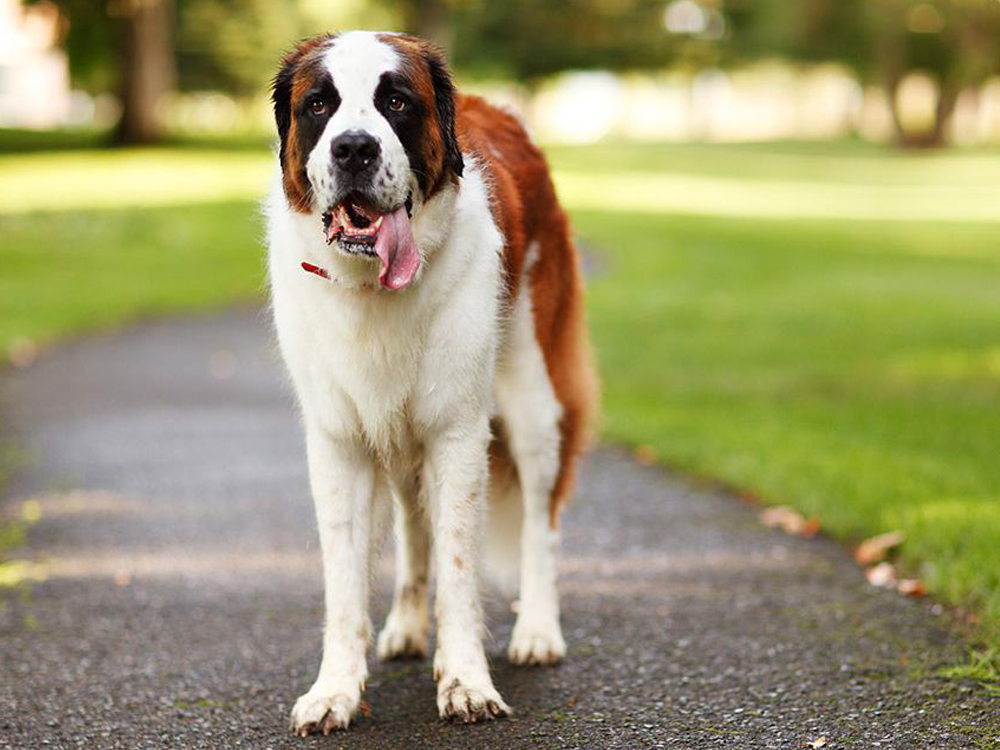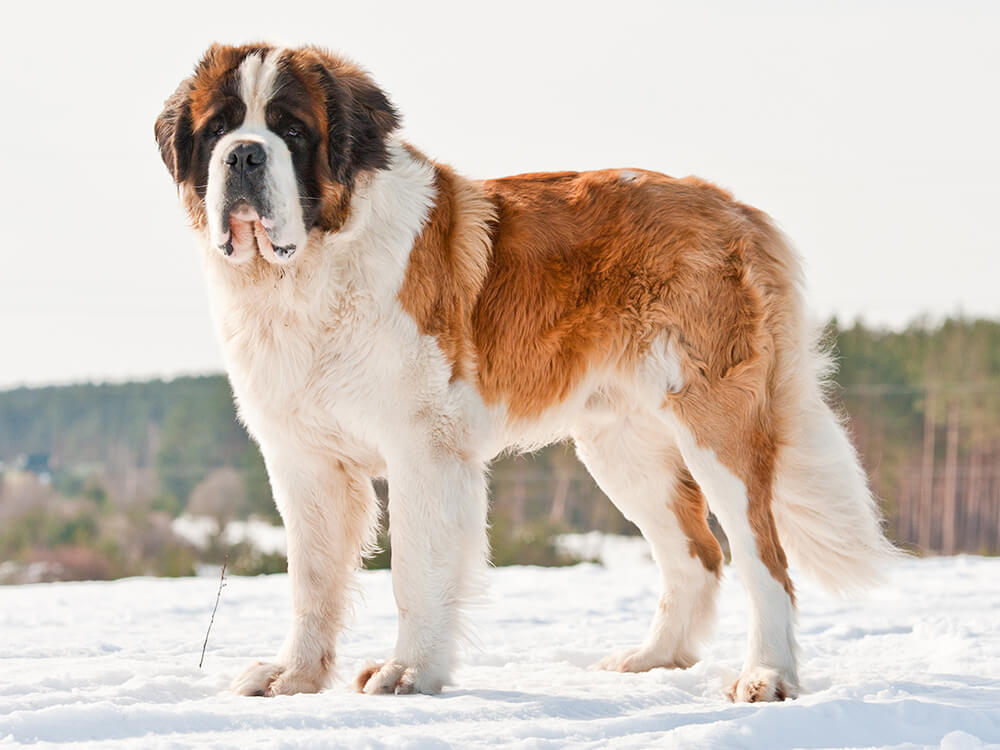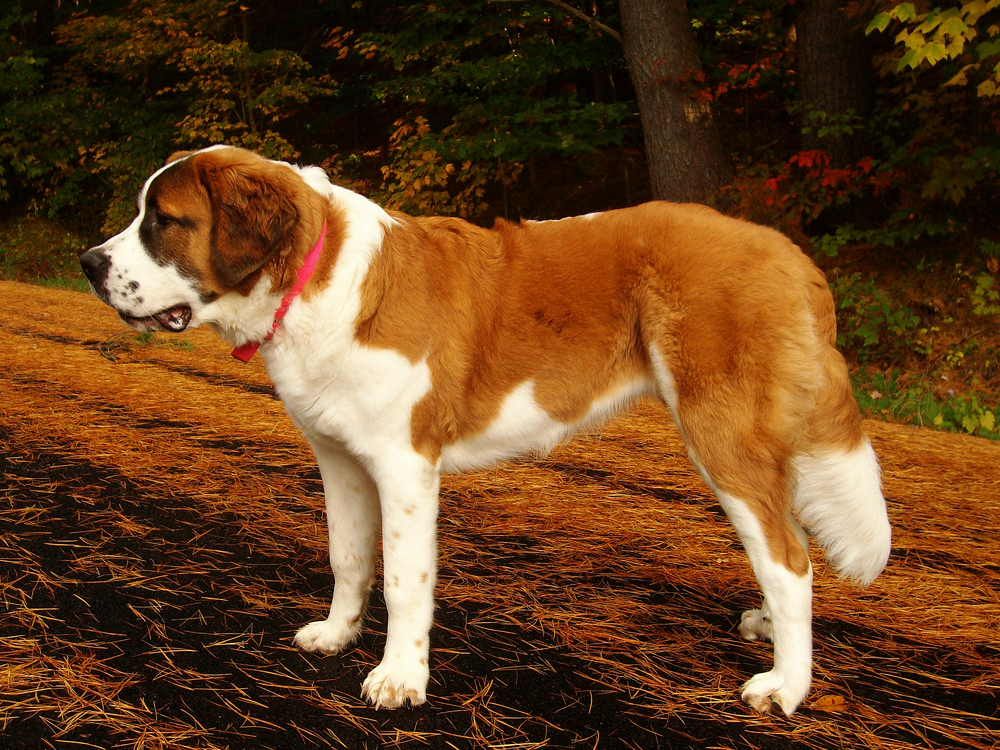
Saint Bernard Breed Pictures
Vital Breed Stats
| Height: | 61 - 70 cm M | 61 - 70 cm F |
| Weight: | 50 - 91 kg M | 50 - 91 kg F |
| Breed Group: | Utility Dog Group |
| Life Expectancy: | 7 - 10 years |
| KC Registered: | No |
Breed Characteristics
| Size: |  |
| Grooming: |  |
| Exercise Level: |  |
| Trainability: |  |
| Barking Level: |  |
| Good with Children: |  |
| Good with other pets: |  |
| Affectionate: |  |
| Protective: |  |
| Cost to Keep: |  |
Give a thumbs up if you love the Saint Bernard

0
More About the Breed
History
As a powerful, giant-sized dog breed, the Saint Bernard's history is unclear, although it is believed to originate at a monk's hospice in the Great St. Bernard Pass in the Swiss Alps in 1707. Experts claim that this monastery dog was bred to be a watchdog, but not long after was repurposed to become a rescue dog, finding lost people even in terrible weather conditions (hence the moniker mountain rescue dog).
The breed almost went extinct in the 1830s when the monks tried to interbreed several dogs too much, which resulted in the dogs developing diseases. Nevertheless, the result of crossing the breed with the Newfoundland, the Great Dane, and the Great Pyrenees resulted in the modern Saint Bernard we see today.
The Saint Bernard is recognised by the Kennel Club in the UK. It was first entered into the Swiss Stud Book in 1884, whilst the breed standard was later approved in 1888. Since then, it has become the Swiss national dog. Today, the Saint Bernard is beloved by anyone who owns it because of its affectionate and devoted nature which makes it a great human companion and family pet.
Appearance
The Saint Bernard is a giant dog breed that weighs 120–180 pounds and stands 65–90 centimetres. It has a sizeable imposing head, short muzzle, well-defined stop, and square-shaped nose, dark eyes with a gentle and intelligent expression, and slightly large ears that are reaching the dog's cheeks. The jaw is strong and the neck is well-muscled and moderately arched with nicely-developed dewlaps. Its broad shoulders are sloped up at its withers whilst the legs are strong, straight, and well-boned.
The Saint Bernard's coat is either rough or smooth. The smooth coat is tight and lies close to the body, whilst the rough coat is thick, flat, and more abundant around the neck and legs. The commonly accepted colours are mahogany brindle with white and a red shade with white. Usually, black shading is found on the face and ears.
Grooming
Regardless of which type of coat it wears, the Saint Bernard is a bit high-maintenance since it's known to be a prolific shedder. With that said, make sure to brush its coat a few times a week or daily, if possible. Often, owners hire professional groomers to make it easier for them to maintain the dog's coat.
Dog grooming is an integral part of the well-being of the Saint Bernard, or any dog. Aside from making sure the coat is clean, it is also necessary to pay attention to other physical aspects that require care such as the ears, teeth, and the nails. Brush the dog's teeth to prevent gum disease and bad breath. Ears should also be checked for signs of infection and cleaned regularly to avoid problems. Nails must be trimmed at least once or twice a month, or when you start hearing clicking sounds on the floor.
Temperament
Living up to its name, the Saint Bernard is a calm, tolerant, and gentle dog breed. With that said, the Saint Bernard is a suitable choice for a family with kids. However, its sheer size is enough reason to make sure playtime or any interaction is well-supervised. We don't want the dog accidentally knocking over small kids.
When it comes to guarding, the Saint Bernard has no violent bone in its body so it may not be able to ward off thieves. It is also on the quieter side of the canine spectrum, so it is neither a watchdog nor a guard dog. When properly trained, it can be quick to let an owner know if someone is about. Also, its size is enough to scare away people not familiar with the breed.
Intelligence
The Saint Bernard is eager to please and, as such, is easy to train. However, do note that this working dog excels in dog sports including cart-pulling (drafting), weight-pulling, obedience trials, and tracking, so you might want to enrol this breed in dog training. Also, keep in mind that no matter how gentle a dog breed is based on its genetic makeup, a bored dog can develop undesirable habits and behaviours. Make sure that the Saint Bernard is given ample mental and physical exercises daily.
With its friendly nature, the Saint Bernard does not have a very high prey drive and will rarely show aggression to other dogs and small animals alike. However, when the mood strikes it, it may find small animals amusing to chase. so care should still be taken.
Nutrition
- Senior and less active: up to 2,650 calories daily
- Typical adults: up to 2,990 calories daily
- Physically active/working dogs: up to 3,320 calories daily
Feeding
Health
Exercise
Cost of Ownership
Can you really afford a Saint Bernard? By afford, the question refers to the dog's lifetime care. A dog could mean financial setbacks from food to pet insurance. For most owners, the lifetime cost to care for a dog and with a Saint Bernard being a large dog, costs will be significantly higher than owning small to medium dogs. The upfront cost to buy a Saint Bernard depends on where it's from. Most Saint Bernard puppies will cost £800 to £1,200, especially a well-bred pedigree puppy.
A puppy will need veterinary care, especially vaccinations against diseases as well as annual boosters. Costs vary, but expect to pay no less than £2,000 per year. You will also need to buy numerous dog items and supplies such as bedding, toys, bowls, and even a dog crate for some dogs. Food is the biggest expense, which will set you back £80 to £100 a month. Pet insurance-wise, the costs vary depending on the provider and the cover you select, but expect to shell out £60 for a basic cover and £100 for a lifetime cover. Overall, the average Saint Bernard owner spends about £150 to £220 a month.
Saint Bernard Breed Highlights
- The Saint Bernard is a gentle giant dog breed originally from Switzerland.
- It is affectionate, kind, and easy-going, making it an excellent companion.
- The Saint Bernard is tolerant and great around children.
- It desires to please its owners, so training is easy.
- It is a prolific shedder, so it is high-maintenance on the grooming front.
- It is neither a watchdog nor guard dog, but its size can scare away people easily.
